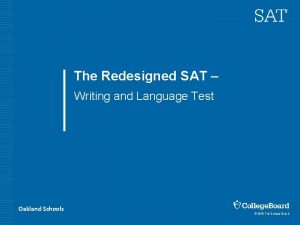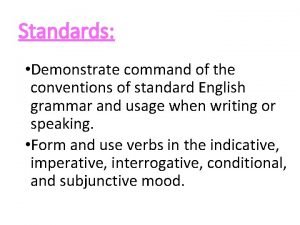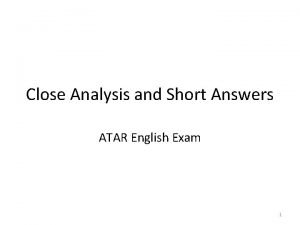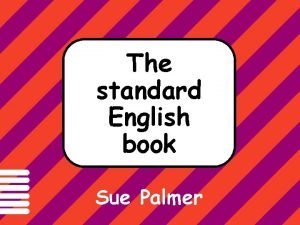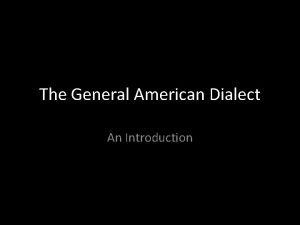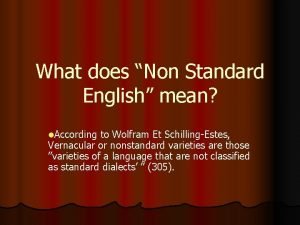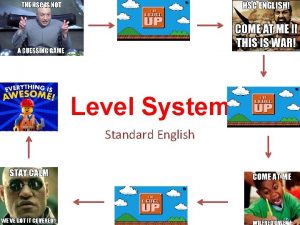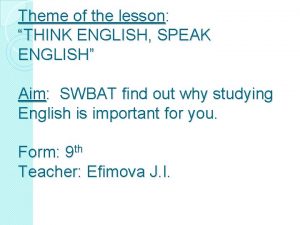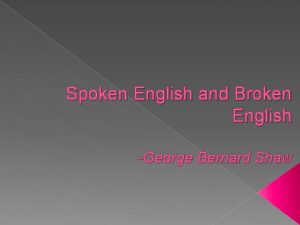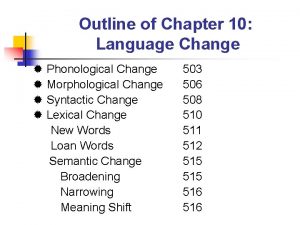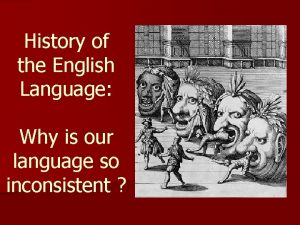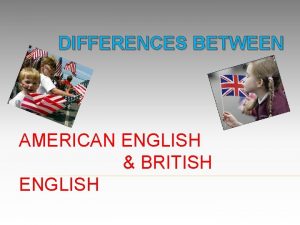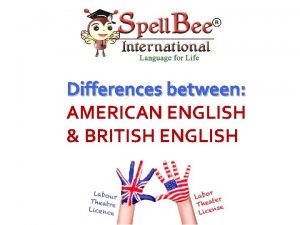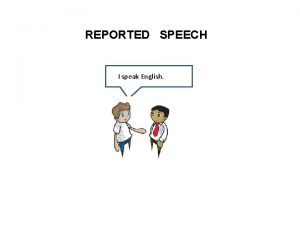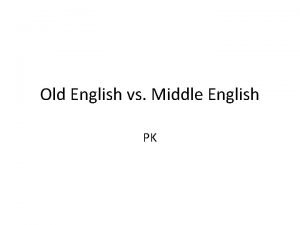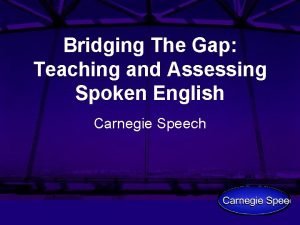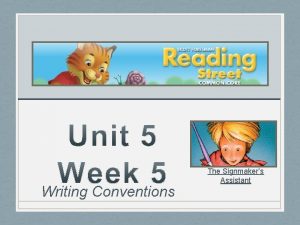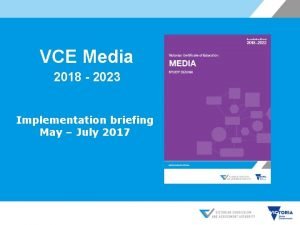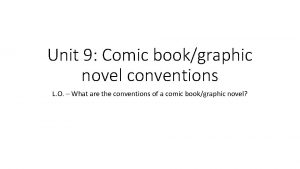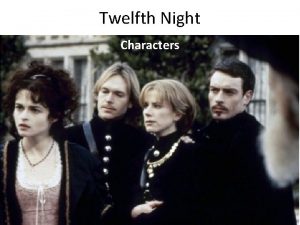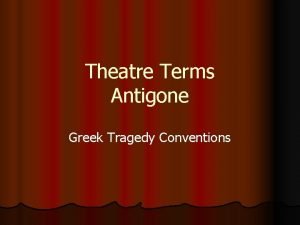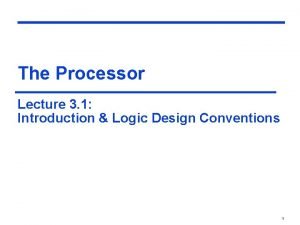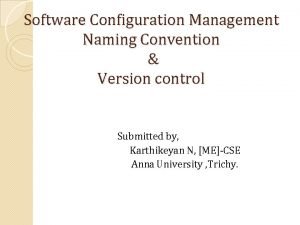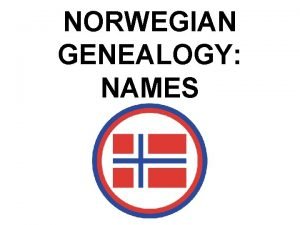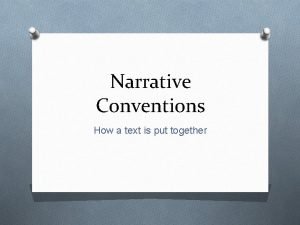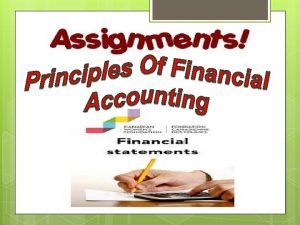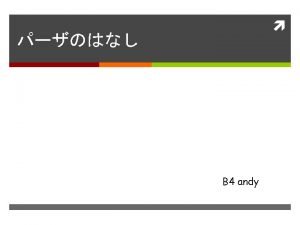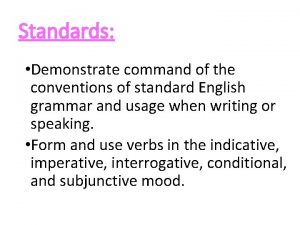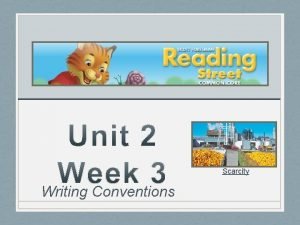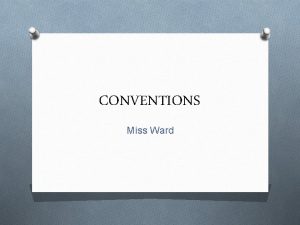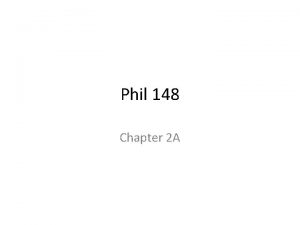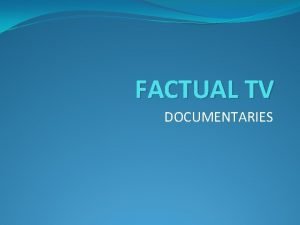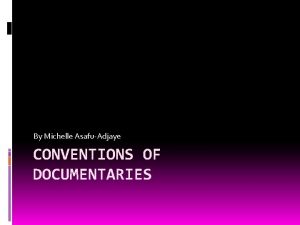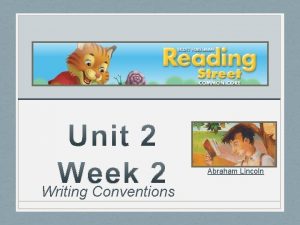THE COMMAND OF THE CONVENTIONS OF STANDARD ENGLISH






















































































- Slides: 86

THE COMMAND OF THE CONVENTIONS OF STANDARD ENGLISH Prepared by Shernette Richards- Francis

Learning Objectives Recognize and use the punctuation marks (full stop, question mark, exclamation mark, comma, colon and hyphen ) correctly. Use capital letters correctly and appropriately. Identify the four kind of sentences Explain the types of sentence, simple, compound and complex

Learning Objectives Distinguish between the types of sentences Explain the concept fallacy Distinguish between sentence and sentence fragment Examine the term monotony Apply the rules of subject verb agreement to writing

For Session 1 we will look at The use of punctuation marks full stop, question mark, exclamation mark, comma, colon, semicolon and hyphen Sentence type ( simple, compound, complex and compound- complex The difference between sentence and fragment Kinds of Sentences

Apply the command of the conventions of standard English

The use of the Full Stop Full stop (. ), also called ‘period’, is used to mark the end of a declarative sentence or an imperative sentence. Example: It was the crop season. (Declarative) Tie your laces. (Imperative )

The use of the Full Stop To mark the shortened forms of words. Example: November , Mr. Mister It is used to mark abbreviations and contractions. Example of abbreviation: December, January Example of contraction: Dr. Doctor, Mrs. Mistress

The use of the Full Stop The places where full stop is used can be easily remembered through practice.

Let us practice! Insert full stop in the following: I began my journey in the cool of the evening I had scarcely reached half a mile from home when I heard a tremendous noise in the distance I was terrified and not knowing the cause of the noise I hurried back to my house for safety I doubt it was my imagination at work I was puzzled to discover that no one else experienced the noise

Question Mark (? ) The question marks the end of an interrogative sentence. Examples: When will we be arriving? Why did you do that? Does any of this matter? He’s certain to be elected, isn’t he?

Question Mark (? ) Cont’d Question marks are used in direct questions, therefore, when the actual words of a speaker are used. A reported question should end with a full stop. Examples: The lady said, ‘Where are you going? ’ (Direct ) The lady asked where she was going. (Indirect)

Question Mark (? ) Cont’d Note that you put a question mark at the end of a question, even if the words in the sentence are not in the normal question order, or some words are omitted. Care is needed here as such a sentence can look, at first sight, like a statement rather than a question. Example: You know he doesn’t live here any longer?

Exclamation Mark Exclamation Mark! Click on exclamation mark above to watch a video


Comma Use comma to: Separate words and phrases, or clauses in a series. Examples: The grocer sells flour, rice, tea, milk and sugar. She ran quickly down the stairs, into the backyard, past the meadow and into the pool. Dan went to the city, bought the new handbag, wrapped it neatly and was on his way home.

Comma Use comma to: Mark off The introductory words from the main body of the sentence. Example: in spite of his father’s objection, the boy pursued hid goal. Mark off words in apposition Example: Our warden, Mr. James, is presenting the prize at the function.

Comma Use comma to: Mark off a parenthesis Example; The captain, as well as his colleagues, was invited to dinner. Mark off non- defining relative clause. Example; Senior citizens, who are entitled to old age pension, must be considered for other benefits.

Comma Use comma to: Mark off a participial phrases. Example: Reading the book review, he realized what an interesting book it was. Mark off a person or person addressed. Example: I advise you, ladies and gentlemen, to do your best to encourage young people to become independent citizens.

Comma Please Click me Comma Work More Practice with Comma

Colon The colon has primarily three grammatical uses and several non-grammatical uses. Grammatical uses of the colon Introducing a list The colon is used to introduce a list of items. Example: The bookstore specializes in three subjects: art, architecture, and graphic design. Do not, however, use a colon when the listed items are incorporated into the flow of the sentence.

Colon The colon is used to separate two independent clauses when the second explains or illustrates the first. In such usage, the colon functions in much the same way as the semicolon. Examples: I have very little time to learn the language: my new job starts in five weeks.

Semi –Colon The most common use of the semicolon is to join together two clauses that could each be separate sentences — creating a longer sentence. For example: John calls it football; Sam calls it soccer. This could be written as two sentences without the semicolon; however, the relationship between the two clauses is made clearer through the use of a semicolon. The semicolon is often used to make the reader think about the relationship between the two clauses.

Semi –Colon The semicolon is also commonly used to join two clauses, changing the sentence in combination with words like ‘therefore’, ‘however’ or ‘on the other hand’. The examples below illustrate this approach: however Sian is Welsh; however, she lives in Canada. in addition He likes to play video games; in addition, he likes to read classical literature.

Semi –Colon otherwise You should stop drinking too much alcohol; otherwise, you’re going to get into trouble. therefore Hundreds of people came to the party; therefore, it was not possible to say hello to everyone individually.

Hyphen


Hyphen

Use of Capital Letters To begin proper nouns-names of people, places days, months, languages, nationalities, religions, festivals. Example: Mark Brown lives in Cuba. January is the fist month in the year. She is a Jamaican and she speaks English The Passover is celebrated in most Christian churches.

Use of Capital Letters To begin important words in the titles of book, films, Television Shows, songs, stories, persons. Examples: Sesame Street, The Advocate, The Pearl, The Wind Beneath My Wings, Voyage in the Dark To begin the pronoun “I” Example: I am brave. When you are around me, I get nervous. q

Use of Capital Letters To begin a sentence, a quotation, a salutation, the closing of a letter. Examples:

Let us Practice Read more about the uses of Capital Letters. Please complete the worksheets below Capitalize me!

Session 2 WE will look at Type of sentences Sentence Fragment Kinds of Sentences Fallacy Monotony Subject Verb Agreement

Develop Methods to Strengthen and Improve Writing Skills

Type of Sentences There are three-type of sentences Simple Sentence Compound Sentence Complex Sentence

Simple Sentence Let us study the sentence blow. What do you observe? What did you Observe ? The minister meets the village weekly. Record it here. The sentence above is an example of a simple sentence because: It contains only one subject and one predicate. It is a group of words that express a complete thought.

Simple Sentence Let us discuss further ? The subject tells who or what the sentence is about. It is usually a noun or a pronoun. The predicate tells what the subject is or does.

Simple Sentence Let us now examine the sentence we started out with. The minister meets the village weekly. “The minister” is the subject because: It answer who the sentence is about. Here the subject is a noun.

Simple Sentence Let us now examine the sentence we started out with. “meets the village weekly”. Is the predicate because Meets is the verb that tell us what the minister does. Therefore for a group of words to be called simple sentence it must has a subject and a (verb) predicate

The Compound Sentence A compound sentence joins two or more independent clauses with a coordinator such as for, and, or but, or a semi-colon. Independent clauses are two phrases that can stand alone as a complete thought. They're not dependent upon one another to express a complete thought, but they tie together similar ideas.

Compound Sentence i. ii. iii. Independent Clause An independent clause contains three things: A subject (something or someone that the sentence is about) An action (a verb - something that is being done) A complete thought (there are no questions as to meaning at the end of the sentence)

The Compound Sentence Coordinator There are seven coordinating conjunctions in the English Language, which are used to link the independent clauses: For And Nor But Or Yet

The Compound Sentence You can use the acronym FANBOYS to help you remember the seven coordinating conjunctions. When you have two independent clauses joined by one of these coordinators, usually a comma is required, before the coordinator. Semi-colon Compound sentences and semi-colons work hand in hand. After all, they both join independent clauses. The trick with semi-colons is to use them when the two independent clauses are related ideas.

The Compound Sentence Let us examine the following examples: Shahid was happy and Alim was gloomy. “Shahid was happy. ” This is an independent clause; it forms a complete thought. “Alim was gloomy” is also an independent clause; it forms a complete thought. Rather than writing two simple sentences we a use a coordinating conjunction and to join both sentences, since they express similar ideas.

Compound Sentence Let us examine the following examples: I'm looking forward to our dinner tonight; you're going to love dining on the water. Because the two sentence are expressing similar ideas a semi colon is used to show the relationship.

Complex Sentence The complex sentence is made up of a main clause and a dependent clause. An independent clause (unlike a dependent clause) can stand alone as a sentence. The independent and dependent clauses are join by a subordinating conjunction. What is a Complex sentence? Watch the video above to learn more about complex sentence

Complex Sentence So let us examine the complex sentence. The choir began the song when the leader gave the cue. The choir began the song. Can stand on its own, therefore it called an independent or a main clause. when: is the subordinating conjunction that join the main clause and the dependent clause. the leader gave the cue. This clause cannot stand

Quiz Complete the quiz from the website below about the types of sentences. https: //www. englishgrammar. org/simplecompound-or-complex-sentence/

Sentence Fragments are incomplete sentences. Usually, fragments are pieces of sentences that have become disconnected from the main clause. One of the easiest ways to correct them is to remove the period between the fragment and the main clause. Other kinds of punctuation may be needed for the newly combined sentence.

Sentence Fragment Below are some examples with the fragments shown in red. Punctuation and/or words added to make corrections are highlighted in blue. Notice that the fragment is frequently a dependent clause or long phrase that follows the main clause.

Sentence Fragment: Coach Dietz exemplified this behavior by walking off the field in the middle of a game. Leaving her team at a time when we needed her. Possible Revision: Coach Dietz exemplified this behavior by walking off the field in the middle of a game, leaving her team at a time when we needed her. Fragment: I need to find a new roommate. Because the one I have now isn't working out too well. Possible Revision: I need to find a new

Sentence Fragment Some fragments are not clearly pieces of sentences that have been left unattached to the main clause; they are written as main clauses but lack a subject or main verb. No main verb Fragment: A story with deep thoughts and emotions. Possible Revisions: � Direct object: She told a story with deep thoughts and emotions. � Appositive: Gilman's "The Yellow

Sentence Fragment No Subject Fragment: With the ultimate effect of all advertising is to sell the product. Possible Revisions: � Remove preposition: The ultimate effect of all advertising is to sell the product.

Kinds of Sentences There are four kinds of sentences.

Kinds of Sentences

Questions What is a declarative Sentence ? Write your answer here What is an imperative sentence? Write your answer here

Questions What is an Interrogative Sentence ? Write your answer here What is an Exclamatory sentence? Write your answer here

Quiz Complete the quiz below about Kinds of Sentences. Click me! https: //www. englishgrammar. org/kinds -sentences-3/

Fallacy What are fallacies? Fallacies are defects that weaken arguments. By learning to look for them in your own and others’ writing, you can strengthen your ability to evaluate the arguments you make, read, and hear. It is important to realize two things about fallacies: first, fallacious arguments are very, very common and can be quite persuasive, at least to the casual reader or listener. You can find dozens of examples of fallacious reasoning in newspapers, advertisements, and other sources.

Fallacy Cont’d Second, it is sometimes hard to evaluate whether an argument is fallacious. An argument might be very weak, somewhat strong, or very strong. An argument that has several stages or parts might have some strong sections and some weak ones. The goal of this course, then, is not to teach you how to label arguments as fallacious or fallacyfree, but to help you look critically at your own arguments and move them away from the “weak”

Fallacy So what do fallacies look like? For each fallacy listed, there is a definition or explanation, an example, and a tip on how to avoid committing the fallacy in your own arguments. Hasty generalization Definition: Making assumptions about a whole group or range of cases based on a sample that is inadequate (usually because it is atypical or too small). Stereotypes about people (“librarians are shy and smart, ” “wealthy people are snobs, ” etc. ) are a common example of the principle underlying hasty generalization.

Fallacy Hasty generalization Example: “My roommate said her philosophy class was hard, and the one I’m in is hard, too. All philosophy classes must be hard!” Two people’s experiences are, in this case, not enough on which to base a conclusion.

Fallacy Tip: Ask yourself what kind of “sample” you’re using: Are you relying on the opinions or experiences of just a few people, or your own experience in just a few situations? If so, consider whether you need more evidence, or perhaps a less sweeping conclusion. (Notice that in the example, the more modest conclusion “Some philosophy classes are hard for some students” would not be a hasty generalization. )

Fallacy Missing the point Definition: The premises of an argument do support a particular conclusion—but not the conclusion that the arguer actually draws.

Fallacy Missing the point Example: “The seriousness of a punishment should match the seriousness of the crime. Right now, the punishment for drunk driving may simply be a fine. But drunk driving is a very serious crime that can kill innocent people. So the death penalty should be the punishment for drunk driving. ” The argument actually supports several conclusions—”The punishment for drunk driving should be very serious, ” in particular— but it doesn’t support the claim that the death penalty, specifically, is warranted.

Fallacy Missing the point Tip: Separate your premises from your conclusion. Looking at the premises, ask yourself what conclusion an objective person would reach after reading them. Looking at your conclusion, ask yourself what kind of evidence would be required to support such a conclusion, and then see if you’ve actually given that evidence. Missing the point often occurs when a sweeping or extreme conclusion is being drawn, so be especially careful if you know you’re claiming something big.

Fallacy Post hoc (also called false cause) This fallacy gets its name from the Latin phrase “post hoc, ergo propter hoc, ” which translates as “after this, therefore because of this. ”

Fallacy Post hoc Definition: Assuming that because B comes after A, A caused B. Of course, sometimes one event really does cause another one that comes later—for example, if I register for a class, and my name later appears on the roll, it’s true that the first event caused the one that came later. But sometimes two events that seem related in time aren’t really related as cause and event. That is, correlation isn’t the same thing as causation.

Fallacy Post hoc Examples: “President Jones raised taxes, and then the rate of violent crime went up. Jones is responsible for the rise in crime. ” The increase in taxes might or might not be one factor in the rising crime rates, but the argument hasn’t shown us that one caused the other. Tip: To avoid the post hoc fallacy, the arguer would need to give us some explanation of the process by which the tax increase is supposed to have produced higher crime rates. And that’s

Fallacy Post hoc Tip: To avoid the post hoc fallacy, the arguer would need to give us some explanation of the process by which the tax increase is supposed to have produced higher crime rates. And that’s what you should do to avoid committing this fallacy: If you say that A causes B, you should have something more to say about how A caused B than just that A came first and B came later.

Fallacy Slippery slope Definition: The arguer claims that a sort of chain reaction, usually ending in some dire consequence, will take place, but there’s really not enough evidence for that assumption. The arguer asserts that if we take even one step onto the “slippery slope, ” we will end up sliding all the way to the bottom; he or she assumes we can’t stop partway down the hill.

Fallacy Slippery slope Example: “Animal experimentation reduces our respect for life. If we don’t respect life, we are likely to be more and more tolerant of violent acts like war and murder. Soon our society will become a battlefield in which everyone constantly fears for their lives. It will be the end of civilization. To prevent this terrible consequence, we should make animal experimentation illegal right now. ” Since animal experimentation has been legal for some time and civilization has not yet ended, it seems particularly clear that this chain of events won’t necessarily take place. Even if we believe that experimenting on animals reduces respect for life, and loss of respect for life makes us more tolerant of violence, that may be the spot on the hillside at which things stop—we may not slide all the way down to the end of civilization. And so we have not yet been given sufficient reason to accept the arguer’s conclusion that we must make animal experimentation illegal right now.

Fallacy Slippery slope Like post hoc, slippery slope can be a tricky fallacy to identify, since sometimes a chain of events really can be predicted to follow from a certain action. Here’s an example that doesn’t seem fallacious: “If I fail English 101, I won’t be able to graduate. If I don’t graduate, I probably won’t be able to get a good job, and I may very well end up doing temp work or flipping burgers for the next year. ”

Fallacy Slippery slope Tip: Check your argument for chains of consequences, where you say “if A, then B, and if B, then C, ” and so forth. Make sure these chains are reasonable.

Fallacy https: //writingcenter. unc. edu/tips-andtools/fallacies/ please read the website listed above for more information on Fallacy. Complete the task from this website about Fallacy http: //www. mdc. edu/kendall/collegeprep/document s 2/COMMON%20 FALLACIESrev. pdf

Produce Clear and Coherent Writing Pieces

Subject Verb Agreement If the subject is singular (one person, one thing), the verb must be singular. Example: A good student does his homework. * * In the present tense a singular verb ends with an s.

Subject Verb Agreement If the subject is plural (more than one person or thing), the verb must be plural. Ex. All good students do their homework. * *Notice that the verb do does not have an s!

Practice The student (works, work). 2. He (studies, study) too. 3. All the students (walks, walk) to school. 4. These pictures (was, were) drawn by the instructor. 5. Children (wants, want) their parents to go to school.

Subject Verb Agreement If words or phrases come between the subject and the verb, first isolate the subject and then decide on the correct verb form. Prepositional phrases can be real trouble Example: The designs on Indian pottery (fascinates, fascinate) me. (The subject, designs, is plural; therefore, the verb must be plural. The plural verb is fascinate. )

Subject Verb Agreement PRACTICE : In each of the following sentences, underline the subject and the verb. 1. The buildings on each campus (was, were) recently completed. 2. All applications for the job (has, have) been received. 3. Every student in all classes (has, have) been notified of the CLAST test date. 4. The chalkboards in the school (is, are) scratched. 5. Each year the winner from all the schools throughout the state (seems, seem) to be very much surprised.

Subject Verb Agreement Some words that are often used as subjects are always singular. Memorize them!! (each, one, either, no one, everyone, anyone, someone, anybody, somebody, everybody, nobody, everything. ) Example: Everybody wants to make good grades.

Subject Verb Agreement Some words that are often used as subjects are always plural. Memorize them!! (Several, few, both, many) Example: Several of the staff understand the idea of an attendance policy.

Subject Verb Agreement Some words may be either singular or plural, depending on how they are used. (some, any, all, most) Examples: Some of the fruit is rotten. (Some fruit is rotten. ) Some of the apples are rotten. (Some apples are rotten. ) All of this apple is rotten. (The entire apple is rotten. ) All of these apples are rotten. (All apples are rotten. )

Subject Verb Agreement If the sentence has compound subjects (more than one subject) joined by and, the verb is usually plural. Examples: Ellis and John are twins. The beginning of the story (and) the end of the story were exciting.

Subject Verb Agreement When compound subjects are joined by or or nor, the verb must agree with the nearer subject. Examples: Either the old men or the young man was responsible for the lovely music. Neither the teacher nor the students are in class this morning.

Subject Verb Agreement When a sentence begins with eithere or here, the subject comes behind the verb. Example: There is going to be just one student representative on the board.
 Standard english conventions sat practice
Standard english conventions sat practice Passive voice definition
Passive voice definition Short answer response atar
Short answer response atar Standard error
Standard error What is your home language
What is your home language Standard cost system
Standard cost system Peruntukan masa kssm pendidikan khas
Peruntukan masa kssm pendidikan khas Non standard english
Non standard english Standard american english
Standard american english What does standard english mean
What does standard english mean Petal scaffold
Petal scaffold Hát kết hợp bộ gõ cơ thể
Hát kết hợp bộ gõ cơ thể Lp html
Lp html Bổ thể
Bổ thể Tỉ lệ cơ thể trẻ em
Tỉ lệ cơ thể trẻ em Chó sói
Chó sói Tư thế worm breton là gì
Tư thế worm breton là gì Hát lên người ơi
Hát lên người ơi Các môn thể thao bắt đầu bằng tiếng bóng
Các môn thể thao bắt đầu bằng tiếng bóng Thế nào là hệ số cao nhất
Thế nào là hệ số cao nhất Các châu lục và đại dương trên thế giới
Các châu lục và đại dương trên thế giới Công thức tính thế năng
Công thức tính thế năng Trời xanh đây là của chúng ta thể thơ
Trời xanh đây là của chúng ta thể thơ Mật thư anh em như thể tay chân
Mật thư anh em như thể tay chân Phép trừ bù
Phép trừ bù độ dài liên kết
độ dài liên kết Các châu lục và đại dương trên thế giới
Các châu lục và đại dương trên thế giới Thể thơ truyền thống
Thể thơ truyền thống Quá trình desamine hóa có thể tạo ra
Quá trình desamine hóa có thể tạo ra Một số thể thơ truyền thống
Một số thể thơ truyền thống Cái miệng nó xinh thế chỉ nói điều hay thôi
Cái miệng nó xinh thế chỉ nói điều hay thôi Vẽ hình chiếu vuông góc của vật thể sau
Vẽ hình chiếu vuông góc của vật thể sau Thế nào là sự mỏi cơ
Thế nào là sự mỏi cơ đặc điểm cơ thể của người tối cổ
đặc điểm cơ thể của người tối cổ V. c c
V. c c Vẽ hình chiếu đứng bằng cạnh của vật thể
Vẽ hình chiếu đứng bằng cạnh của vật thể Fecboak
Fecboak Thẻ vin
Thẻ vin đại từ thay thế
đại từ thay thế điện thế nghỉ
điện thế nghỉ Tư thế ngồi viết
Tư thế ngồi viết Diễn thế sinh thái là
Diễn thế sinh thái là Các loại đột biến cấu trúc nhiễm sắc thể
Các loại đột biến cấu trúc nhiễm sắc thể Số nguyên tố là gì
Số nguyên tố là gì Tư thế ngồi viết
Tư thế ngồi viết Lời thề hippocrates
Lời thề hippocrates Thiếu nhi thế giới liên hoan
Thiếu nhi thế giới liên hoan ưu thế lai là gì
ưu thế lai là gì Sự nuôi và dạy con của hổ
Sự nuôi và dạy con của hổ Sự nuôi và dạy con của hươu
Sự nuôi và dạy con của hươu Hệ hô hấp
Hệ hô hấp Từ ngữ thể hiện lòng nhân hậu
Từ ngữ thể hiện lòng nhân hậu Thế nào là mạng điện lắp đặt kiểu nổi
Thế nào là mạng điện lắp đặt kiểu nổi English speak lesson
English speak lesson Spoken english and broken english
Spoken english and broken english Tumoxan
Tumoxan Who is father of english drama
Who is father of english drama Old english vs modern english
Old english vs modern english An american highway and a british
An american highway and a british Differences between american and british english vocabulary
Differences between american and british english vocabulary Old english vs modern english
Old english vs modern english Bella said i speak english
Bella said i speak english Examples of old english
Examples of old english Spoken english and broken english summary
Spoken english and broken english summary Difference between american and british english
Difference between american and british english The signmaker's assistant quiz
The signmaker's assistant quiz Conventions in a sentence
Conventions in a sentence Blog post conventions
Blog post conventions Letter conventions
Letter conventions Vce media study design
Vce media study design Vce drama study design
Vce drama study design Comic strip conventions
Comic strip conventions Twelfth night dramatis personae
Twelfth night dramatis personae Convention de bruxelles transport maritime
Convention de bruxelles transport maritime Thriller movie conventions
Thriller movie conventions Conventions of tragedy
Conventions of tragedy Logic design conventions
Logic design conventions Music video
Music video Software configuration management version control
Software configuration management version control Three rio conventions
Three rio conventions Norwegian naming conventions
Norwegian naming conventions Conventions of narrative writing
Conventions of narrative writing Music video codes
Music video codes Conventions of film posters
Conventions of film posters Accounting conventions and principles
Accounting conventions and principles Magazine cover conventions
Magazine cover conventions What is the purpose of magazine cover
What is the purpose of magazine cover
